People want to communicate over the internet as easily as they do in real life, with similar protections but, potentially, farther reach. In other words, people want to be able to chat with a group of other people who aren't physically in the same location, and still maintain some control over who claims ownership of the conversation. In today's world, of course, a lot of companies have a lot to say about who owns the data you send back and forth over the world wide web. Most companies seem to feel they have the right to govern the way you communicate, how many people your message reaches, and so on. Open source, luckily, doesn't need to own your social life, and so appropriately it's open source developers who are delivering a social network that belongs, first and foremost, to you.
The "Fediverse" (a portmanteau of "federated" and "universe") is a collection of protocols, servers, and users. Together, these form networks that can communicate with one another. Users can exchange short messages, blog-style posts, music, and videos over these networks. Content you post is federated, meaning that once one network is aware of your content, it can pass that content to another network, which passes it to another, and so on.
Most platforms are run by a single company or organization, a single silo where your data is trapped. The only way to share with others is to have them join that service.
Federation allows users of different services to inter-operate with one another without creating an account for each shared resource.
Admins for each service instance can block other instances in case of egregious issues. Users can likewise block users or entire instances to improve their own experience.
Examples of Fediverse platforms
Mastodon is a Fediverse platform that has gotten a lot of attention lately, and it's focused on microblogging (similar to Twitter). Mastodon is only one component of the Fediverse, though. There's much, much more.
- Microblogging: Mastodon, Pleroma, Misskey
- Blogging: Write.as, Read.as
- Video hosting: Peertube
- Audio hosting: Funkwhale
- Image hosting: Pixelfed
- Link aggregator: Lemmy
- Event planning: mobilizon, gettogether.community
History of the Fediverse
In 2008, Evan Prodromou created a microblogging service called identi.ca using the Ostatus protocol and status.net server software. A few years later, he changed his service to use a new protocol, called pump.io. He released the Ostatus protocol to the Free Software Foundation, where it got incorporated into GNU/social. In this form, the fediverse continued along for several years.
In March 2016, Eugen Rochco (Gargron) created Mastodon, which used GNU/social with an interface similar to a popular Twitter interface called Tweetdeck. This gained some popularity.
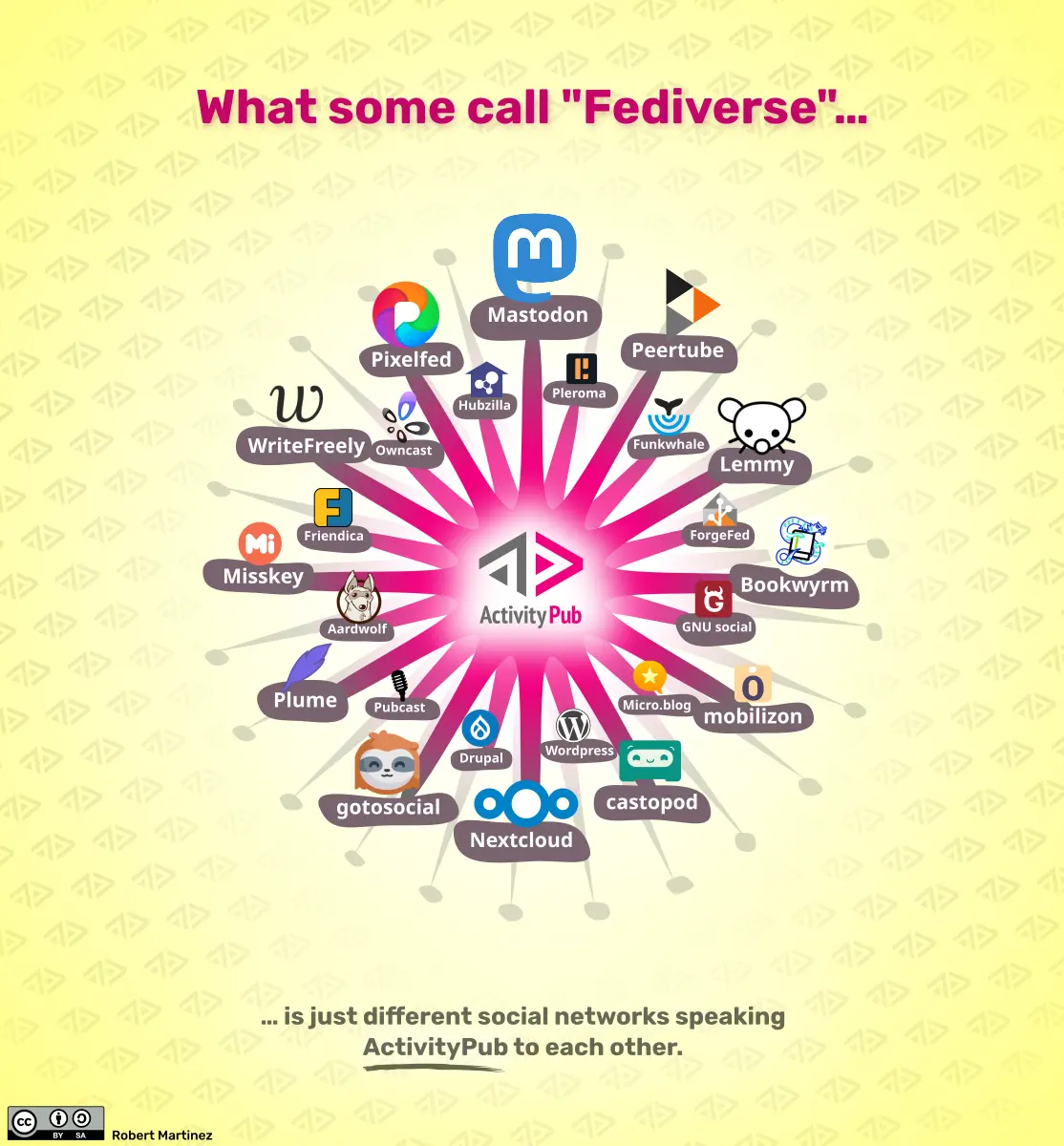
(Robert Martinez, CC BY-SA)
In 2018, a new protocol called ActivityPub was accepted as a standardized protocol by the W3C. Most Fediverse platforms have adopted it. It was authored by Evan Prodromou, Christine Lemmer-Weber, and others, and it expanded upon the previous services to provide a better and more flexible protocol.
What does the Fediverse look like?
The Fediverse, being made of any application using the ActivityPub protocol, is pretty diverse in appearance. As you might imagine, a microblogging platform has different requirements than a video sharing service.
It can be intimidating to wander into the great unknown, though. Here are some screenshots of my favorite federated services:
The Mastodon web client has a simplified view, as well as the advanced view, the simplified default view shows a single column of the Home feed, with options on the right to view more.
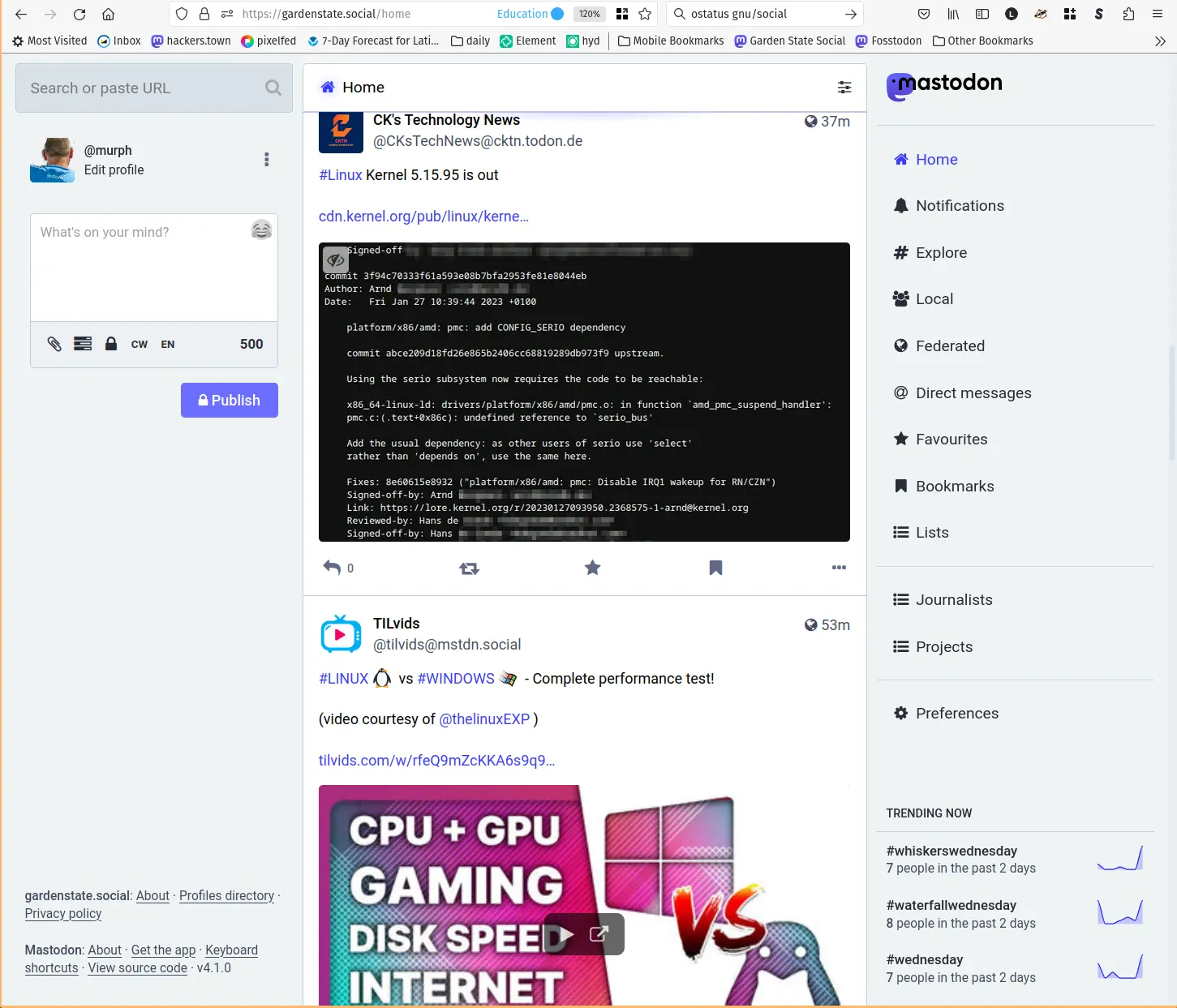
(Bob Murphy, CC BY-SA 4.0)
The Advanced Web Interface, shown below, has the home timeline, local timeline, federated timeline, as well as a user's profile. When users first start, the easier one-column view is the default.
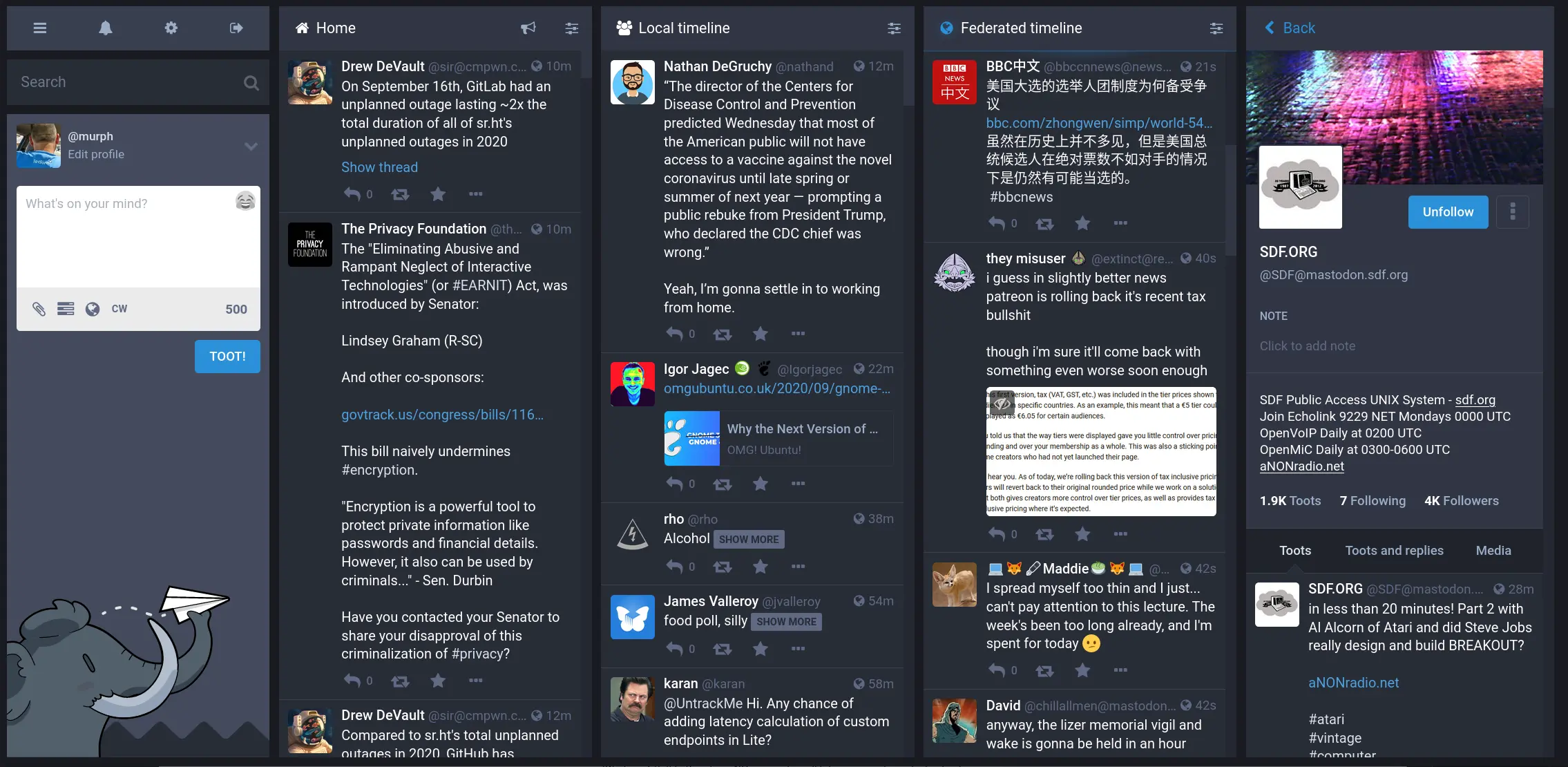
(Bob Murphy, CC BY-SA 4.0)
Pixelfed has an interface focused around displaying images and videos:
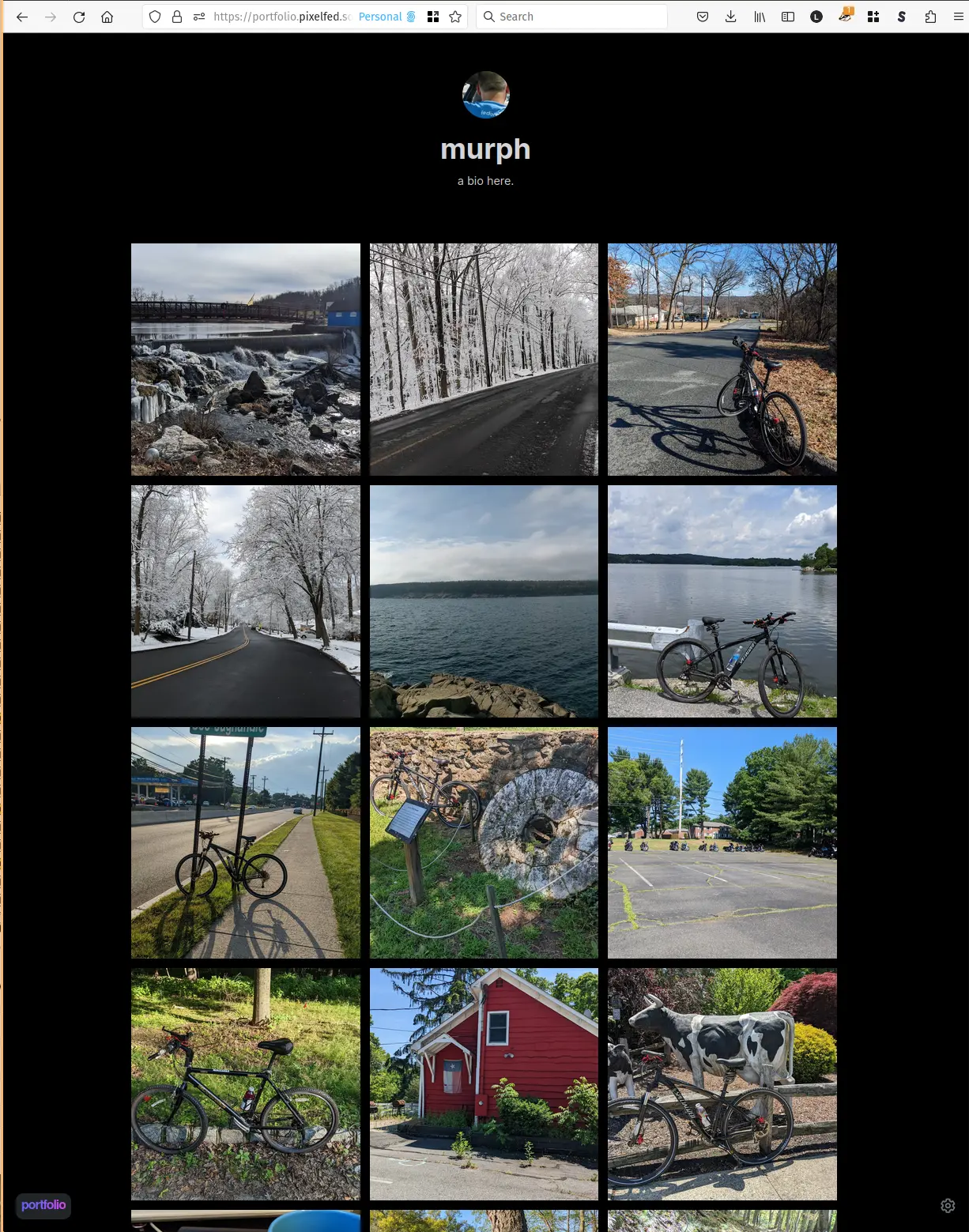
(Bob Murphy, CC BY-SA 4.0)
Peertube is for sharing videos:
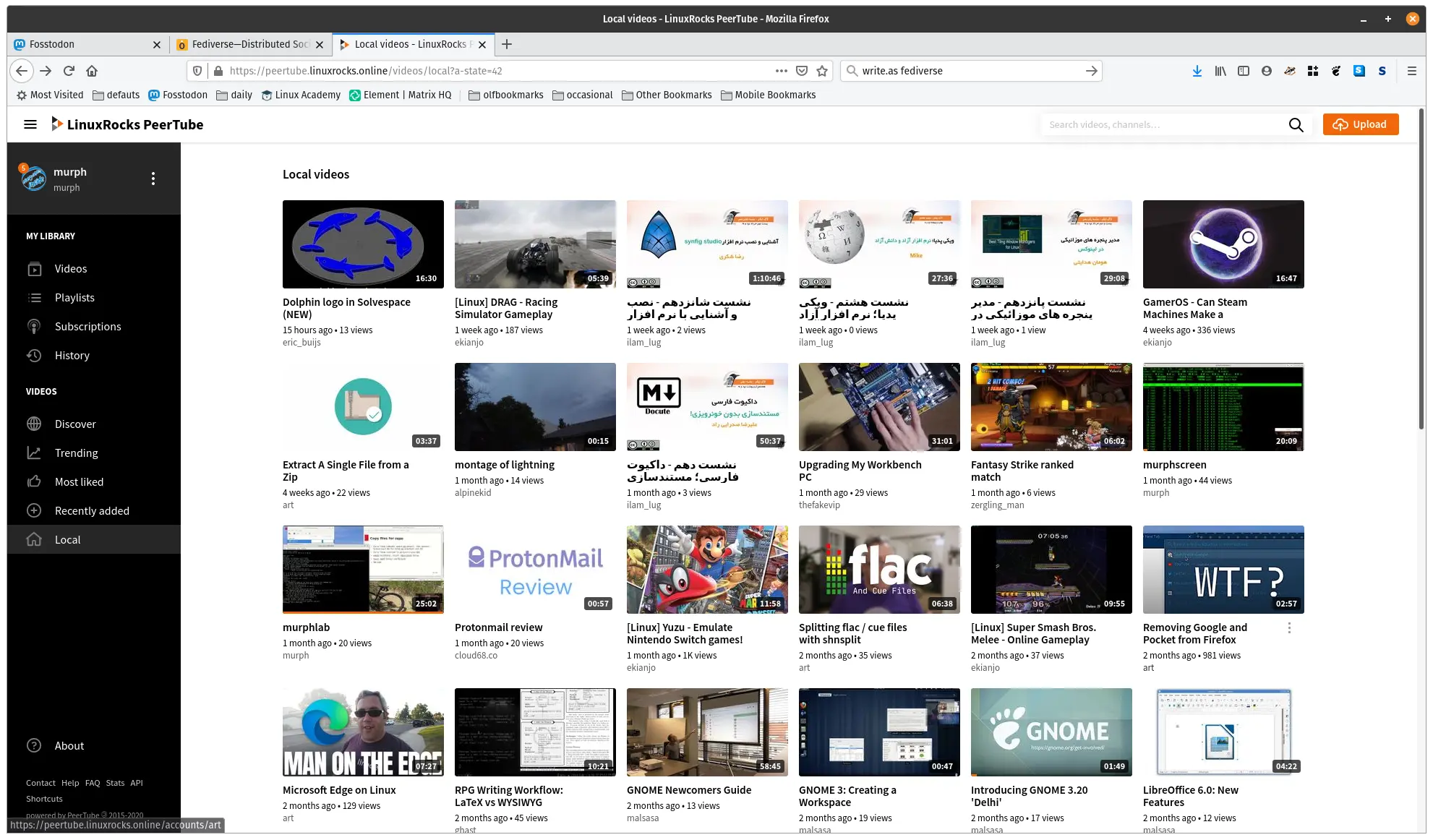
(Bob Murphy, CC BY-SA 4.0)
Mobilizon is an event planning site, with plans for Fediverse integration:
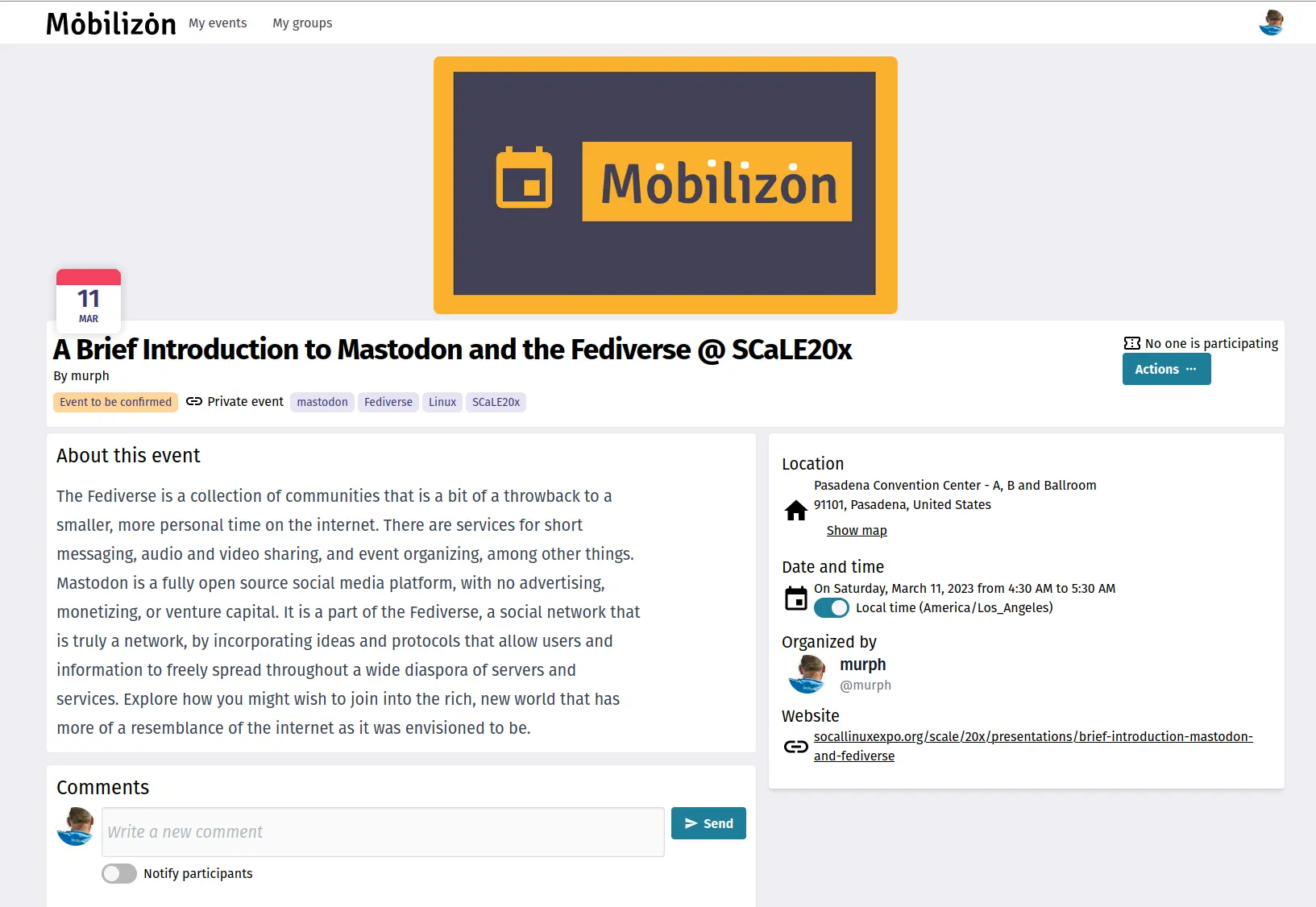
(Bob Murphy, CC BY-SA 4.0)
Switch to open source social
Ready to start? Check out fediverse.info for a nice video explanation and a subject-based way to find (self-selected) other users.
Go to fedi.tips for a comprehensive guide on how to get started, how to migrate your data, and more.
Mastodon has several great entry points:
- Joinmastodon.org: The largest list of Mastodon servers
- Joinfediverse.wiki: Great information on different fediverse services and instances
- Fedi.garden: A well-curated list of instances
For help deciding which instance to join (assuming you don't want to spin up your own just yet), visit fediverse.party/en/portal/servers.
Are you a data nerd? Visit the-federation.info for stats, monitoring service, and a data-driven look at the known Fediverse.
Get federated
The Fediverse is a way to use the social media in an individualized way, either by choosing an instance with a community that suits your needs, or running your own server, and making it exactly the way you want. It avoids the advertising, algorithms, and other unpleasantries that plague many social networks.
If you are looking for a community that better suits your needs than the big silos, take a look, the Mastodon and the Fediverse may be a good fit for you. Get federated today.
You can find me at @murph@hackers.town on the Fediverse.

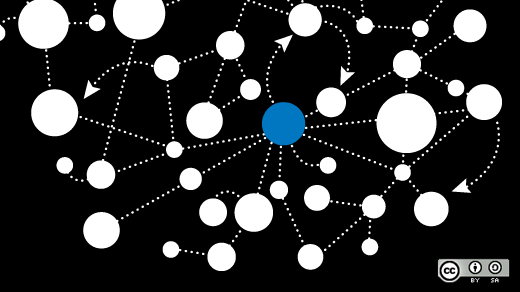





1 Comment